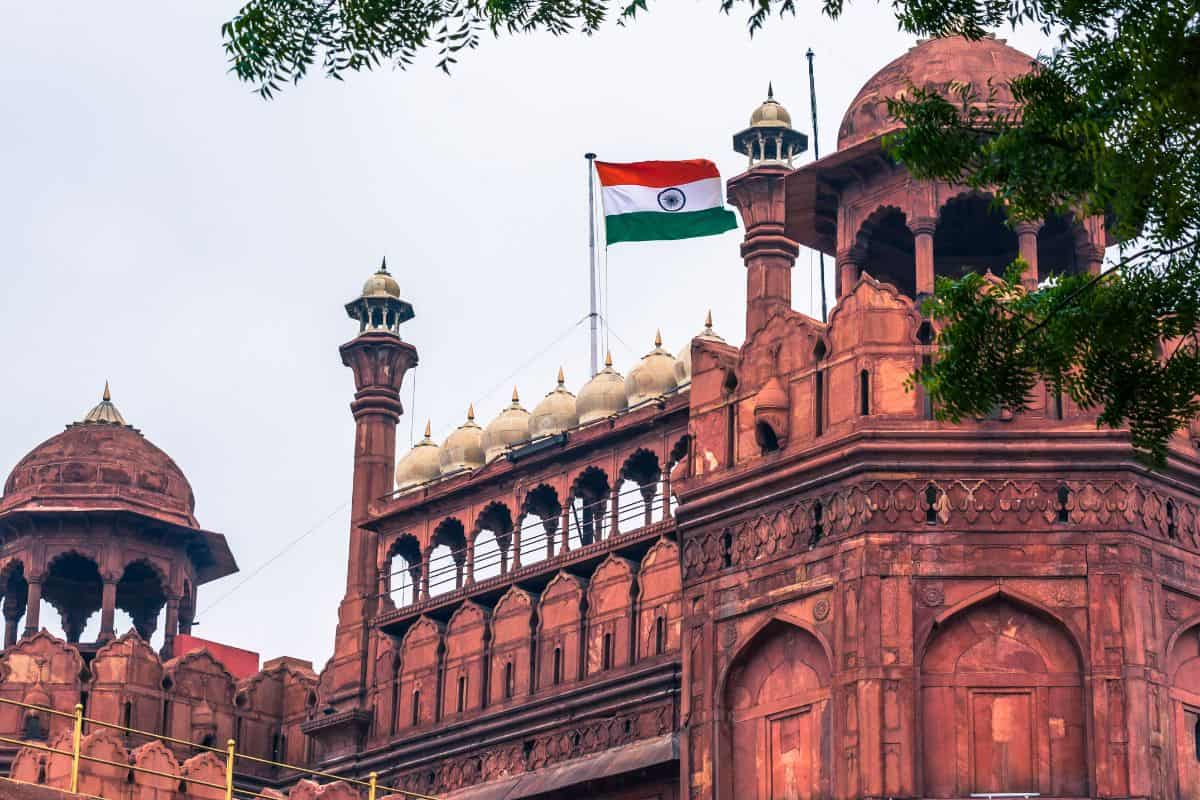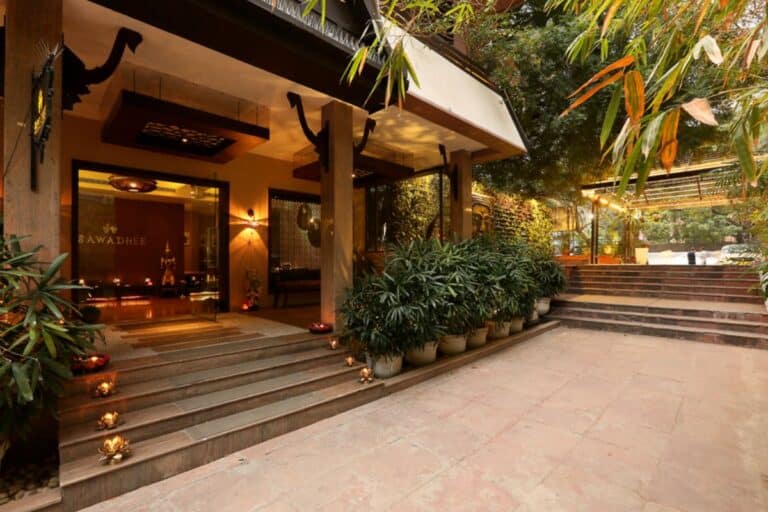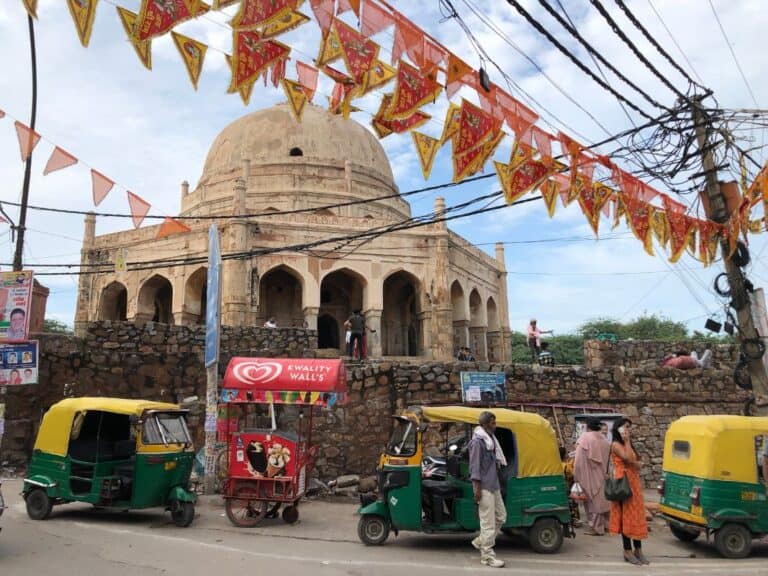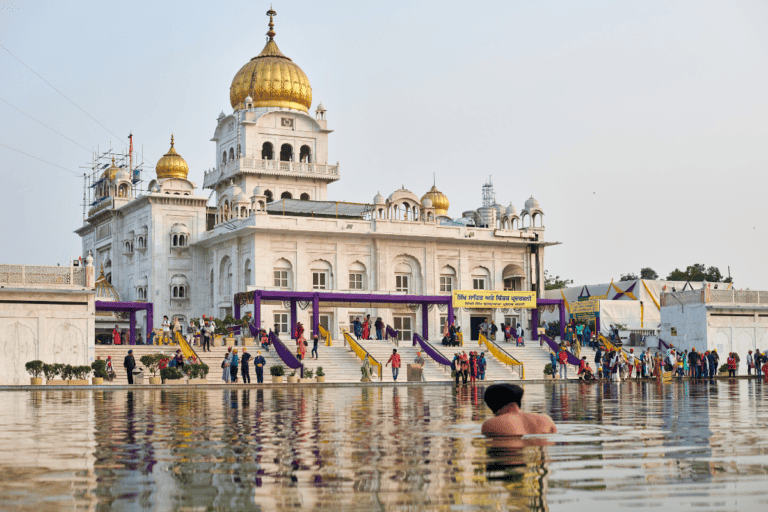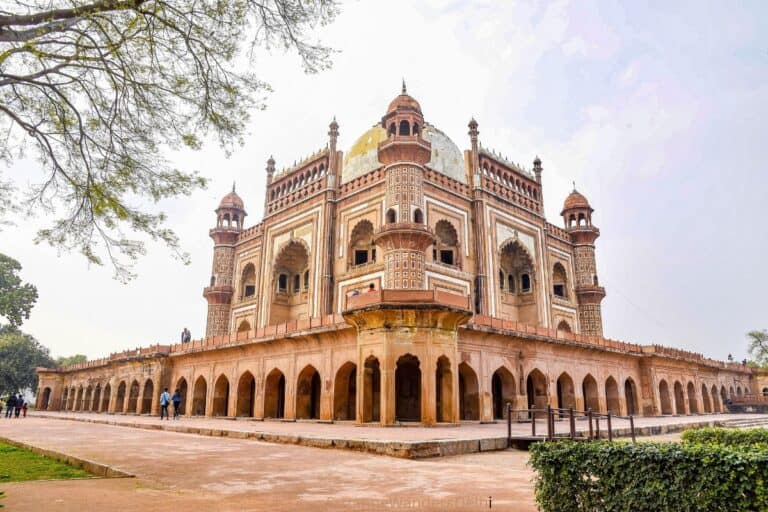World Heritage Sites in Delhi: UNESCO Sites You Have to See

Delhi is one of the oldest cities in the world and home to 3 UNESCO world heritage sites, the Qutub Minar, Humayun’s Tomb and the Red Fort. There is history everywhere in Delhi. India’s capital city has been continuously occupied for over 3,000 years!
Most visitors don’t realize India was one of the richest countries in the world. Visiting these monuments will give you a glimpse into that glorious past, before British rule. Since I live in Delhi I have visited these sites multiple times. It doesn’t matter how many time I see them, they never cease to amaze me.
What is a UNESCO World Heritage Site?
A UNESCO world heritage site is the designation given to places that are deemed to have outstanding universal value for humanity, and should be protected for future generations. UNESCO believes these places belong to all people of the world, regardless of where they are located.
If you want to learn more, here is the website for UNESCO World Heritage Convention.
How to Visit the World Heritage Sites in Delhi
Delhi’s world heritage sites, Qutub Minar, Humayun’s Tomb and the Red Fort are the busiest attractions in the city. These suggestions will make your visit more relaxing and enjoyable.
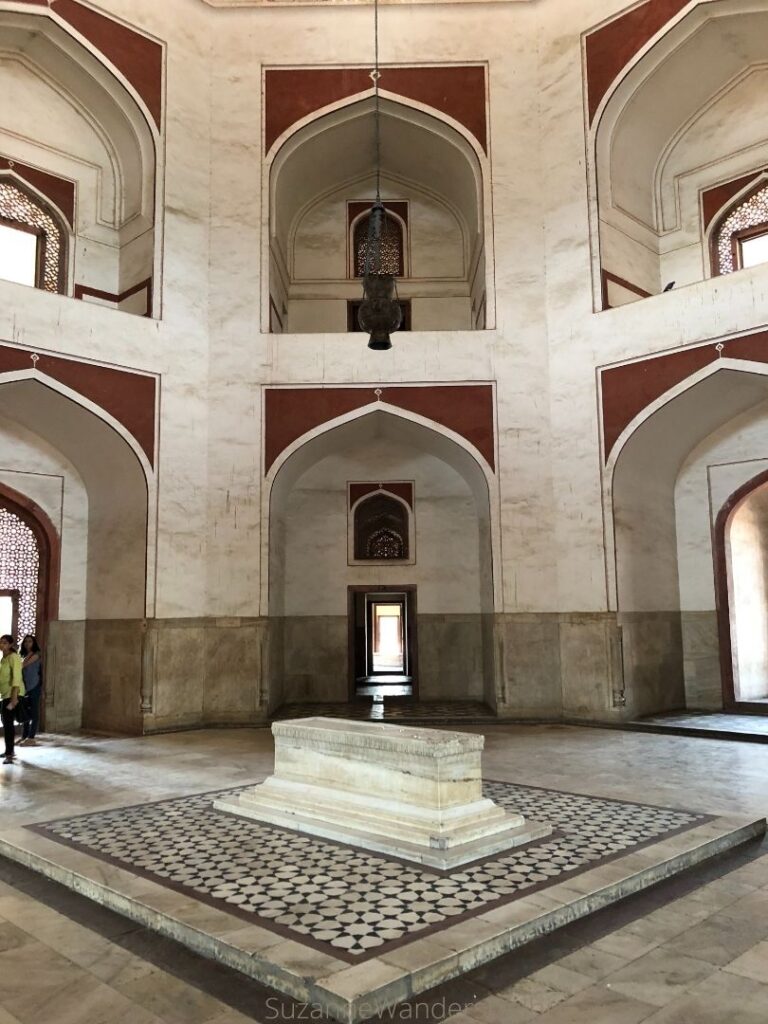
Buy your tickets in advance online. You will save time, and online tickets cost INR 50 less. If you do have to buy tickets onsite, make sure get into the ‘foreigner’ line (assuming you are not Indian).
👍 Buy tickets on the Archeological Survey of India website
You will notice ticket prices for Indians are much lower. This is to guarantee these culturally significant sites are assessable to everyone.
Secondly, go as early in the day as possible. Delhi gets very hot, and there isn’t a lot of shade at any of the world heritage sites. If you’re visiting Delhi in winter, this doesn’t really apply.
Finally, bring water, sunscreen and a hat. Some of these sites have water fountains, but I can’t guarantee the water is filtered. There are toilet facilities at all 3 world heritage sites.
World Heritage Sites in Delhi
Delhi was ruled by a series of dynasties for hundreds of years. The Mughal empire ruled Delhi the longest, and are responsible for two of Delhi’s world heritage sites, Humayun’s Tomb and the Red Fort. The Slave dynasty built the Qutub Minar, the oldest of the world heritage sites.
Because these dynasties came from Afghan and Persian rule originally, you will see a lot of Persian and Indo-Afghan elements in the architecture and design of these monuments.
Qutub Minar Complex
This is my personal favourite of the heritage sites. It’s a beautiful, evocative place full of trees and ruins. The site is named after the tall minaret, the Qutub Minar, but the complex is much more than the minaret.
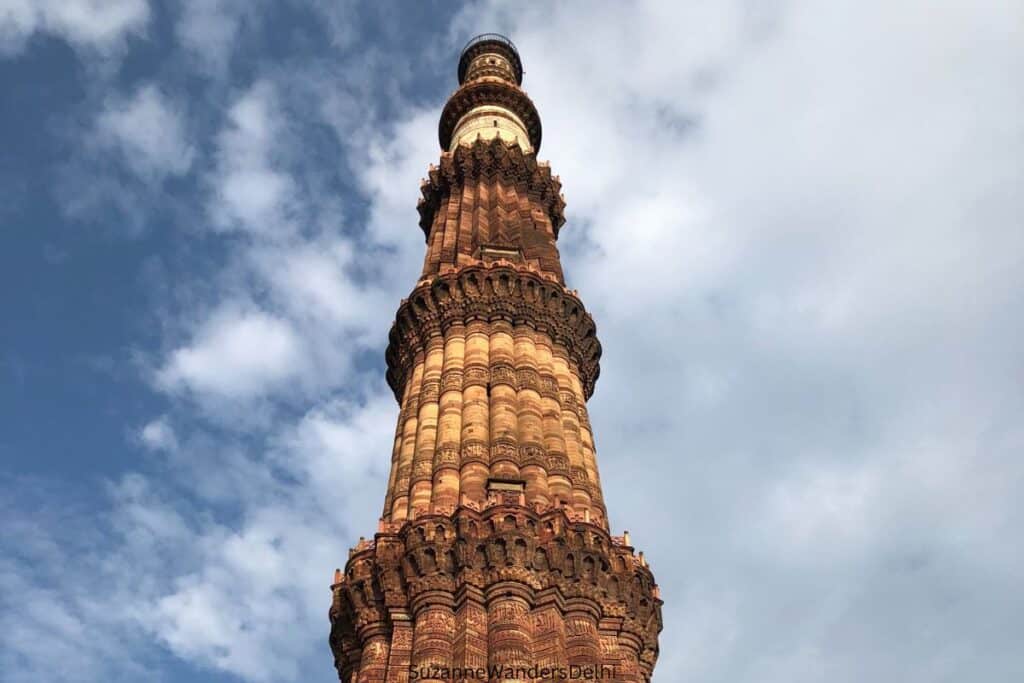
The ruins of a madrassa, mosque, tombs of former Sultanate rulers, the unfinished Alai Minar that was to be even bigger than the Qutub Minar, and of course the famous 1,600 year old iron pillar that never rusts.
Qutub Minar is part of Delhi’s second medieval city, Siri (Delhi is the site of 8 historic cities).
Some of the complex dates back to 1192, and was built over the ruins of ancient Hindu and Jain temples. In fact, the columns in the Quwwat-ul-Islam mosque were pieced together from parts of these torn down temples. If you look at the columns closely you’ll notice Hindu and Jain deities and designs, and that no two columns are exactly alike.
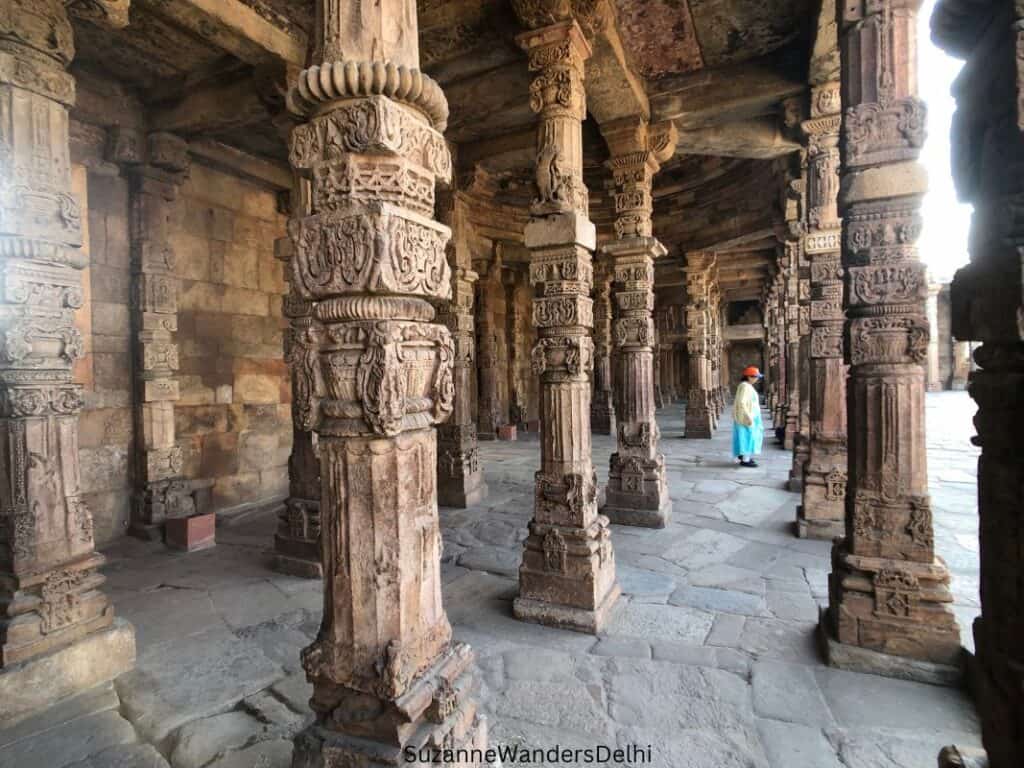
There are two notable tombs at Qutub Minar, belonging to the Sultanate rulers Iltutmish and Alauddin Khilji. Iltutmish was a well liked and regarded ruler, and his tomb is beautiful and well preserved. Alauddin Khilji was feared and despised, and his tomb is in terrible condition even though it’s newer.
- Hours: 9:00 am to 8:00 pm, daily
- Cost: INR 600 for foreigners, children under 15 free (tickets are INR 550 if purchased online)
- Where to eat nearby: Olive Bar & Kitchen
👍 Buy tickets for the Qutub Minar on the Archeological Survey of India website
Humayun’s Tomb
Humayun’s Tomb, built in 1571, was the first garden style tomb built in India. It set the precedent for many grand tombs that came after, including the Taj Mahal. It’s part of the 6th historic city of Delhi, Dinpanah.
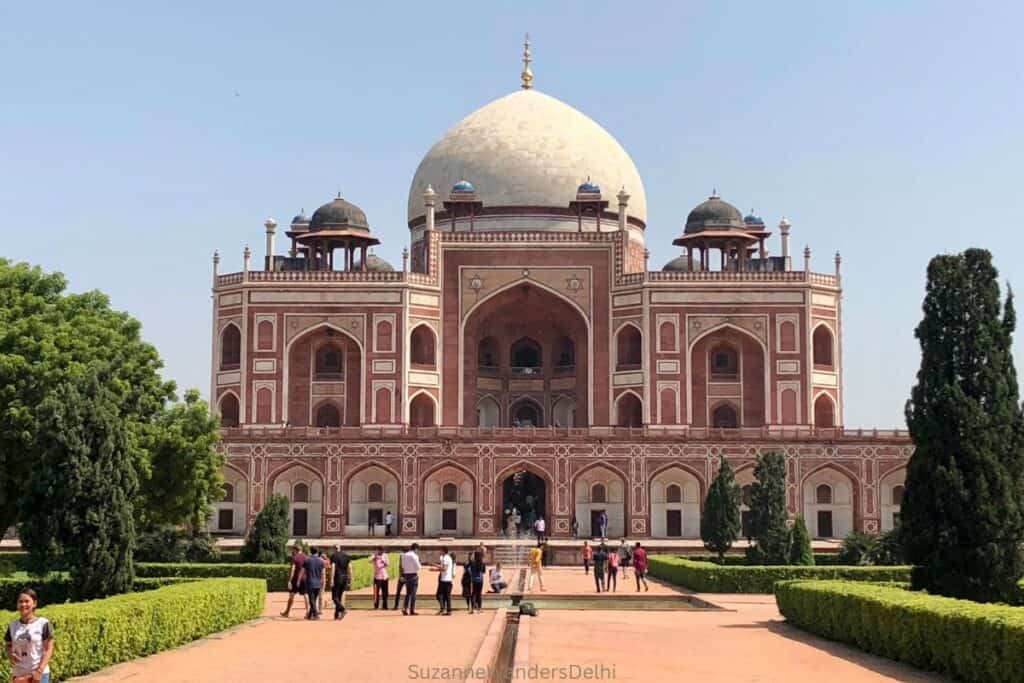
Humayun was one of India’s most famous Mughal emperors. He came to power at the age of 22 in 1530, lost the empire shortly after that, spent 15 years in exile in Persia, and then returned to re-take his empire and restore the Mughals to power.
In fact, it was during his exile in Persia that his wife became enamoured with Persian architecture. It was she that commissioned this tomb after Humayun’s untimely death (he tripped on his robe and fell down a flight of stone steps while rushing to prayers).
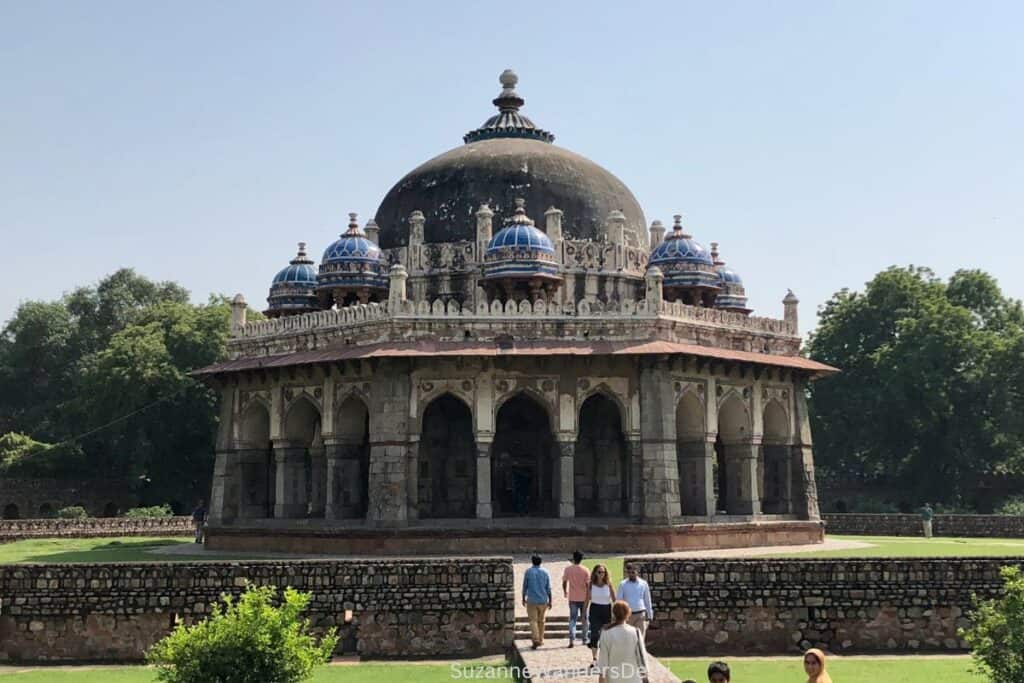
Humayun’s Tomb has been at the centre of a lot of history. At the time of the Rebellion in 1857 the last Mughal ruler took refuge here from the British. During Partition in 1947 refugees set up camp in the tomb and gardens and stayed for 5 years.
The tomb of Humayun is the most impressive of the monuments at the complex, but there are also several smaller tombs, and the graves of over 150 royals and their entourage.
- Hours: 8:00 am to 9:00 pm, daily
- Cost: INR 600 for foreigners, children under 15 free (tickets are INR 550 if purchased online)
- Where to eat nearby: Carnatic Cafe in Sunder Nursery (you’ll have to pay the INR 200 entry fee for Sunder Nursery but it’s a really nice heritage park and worth seeing), or La Croûte
👍 Buy tickets for Humayun’s Tomb on the Archeological Survey of India website
The Red Fort
The most famous of Delhi’s world heritage sites is the Red Fort. It was built in 1639 by Mughal ruler Shah Jahan, the ruler who built the Taj Mahal. It is located in Old Delhi, the 7th historic city of Delhi, then called Shahjahanabad.
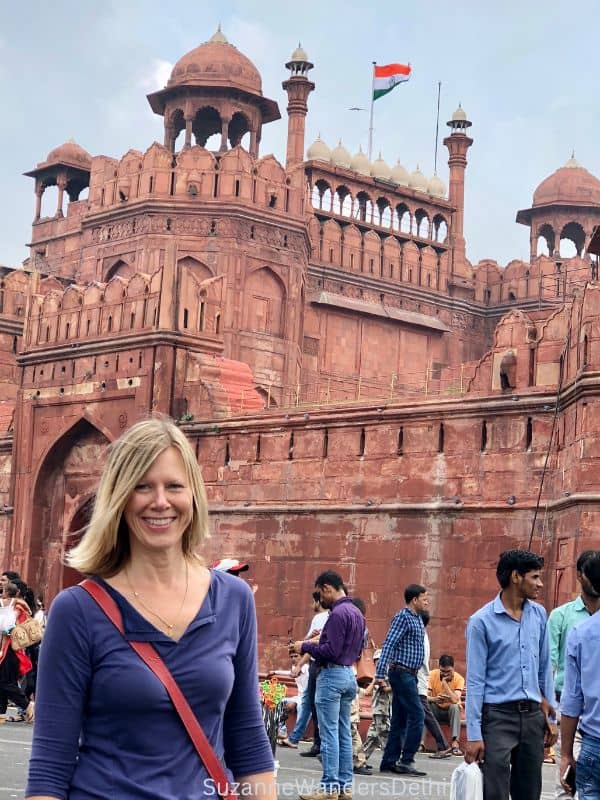
This was the royal palace and main residence of the Mughals in India. It is designed to be a world unto itself with little need for the royals or their entourage to leave. It had its own covered bazaar (you can still shop there today), inner and outer audience halls, a small royal mosque, royal baths, several palaces, a stepwell, canals, fountains and gardens.
Visitors can still see all of these structures today, but many of them were severely looted during the Rebellion of 1857. The British army took over the Red Fort and used it for many things, including barracks. They even turned one of the small palaces into a swimming pool. Although a lot of royal buildings were destroyed at that time, the Red Fort is still spectacular and well worth seeing.
Another way to see the Red Fort is to attend the nightly sound and light show, Jai Hind. You can purchase tickets on BookMyShow.
- Hours: 8:00 am to 9:00 pm, daily (closed Monday)
- Cost: INR 600 for foreigners, children under 15 free (tickets are INR 550 if purchased online)
- Where to eat nearby: Cafe Delhi Heights or Jugmug Thela, both in the Red Fort
👍 Buy tickets for the Red Fort on the Archeological Survey of India website
Tentative World Heritage Sites in Delhi
Delhi has two sites currently on the Tentative List of UNESCO World Heritage Sites, the city of Delhi and the Bahai Lotus Temple.
Delhi – A Heritage City
There are 4 areas of Delhi collectively being considered for UNESCO status as a heritage city: Mehrauli, Nizamuddin, Shahjahanabad (Old Delhi), and New Delhi.
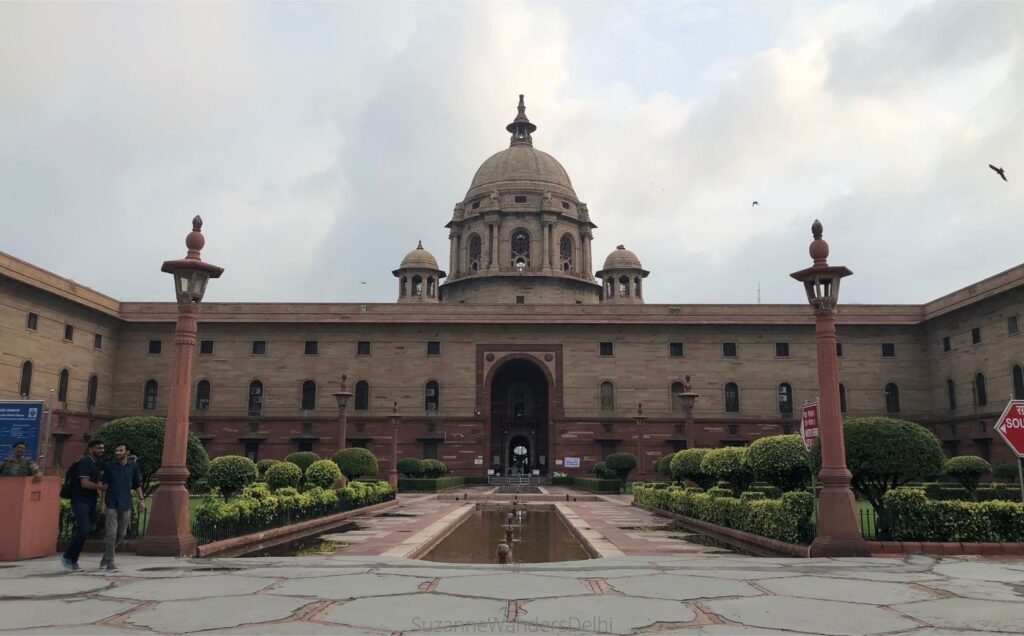
If you want to explore these areas, here are some notable sites that are listed in the UNESCO application:
- Mehrauli: Qutub Minar, Mehrauli Archeological Park, Jahaz Mahal
- Nizamuddin: Humayun’s Tomb, Hazrat Nizamuddin Dargah, Chausath Khamba
- Shahjahanabad (Old Delhi): Red Fort, Chandni Chowk, Fatehpuri Masjid
- New Delhi (Lutyens’ Delhi): Rashtrapati Bhavan, India Gate, Connaught Place
Bahai Lotus Temple
This is one of my favourite temples in Delhi. Not only is it visually unique and stunning, it’s a peaceful place – something that is rare in this city!
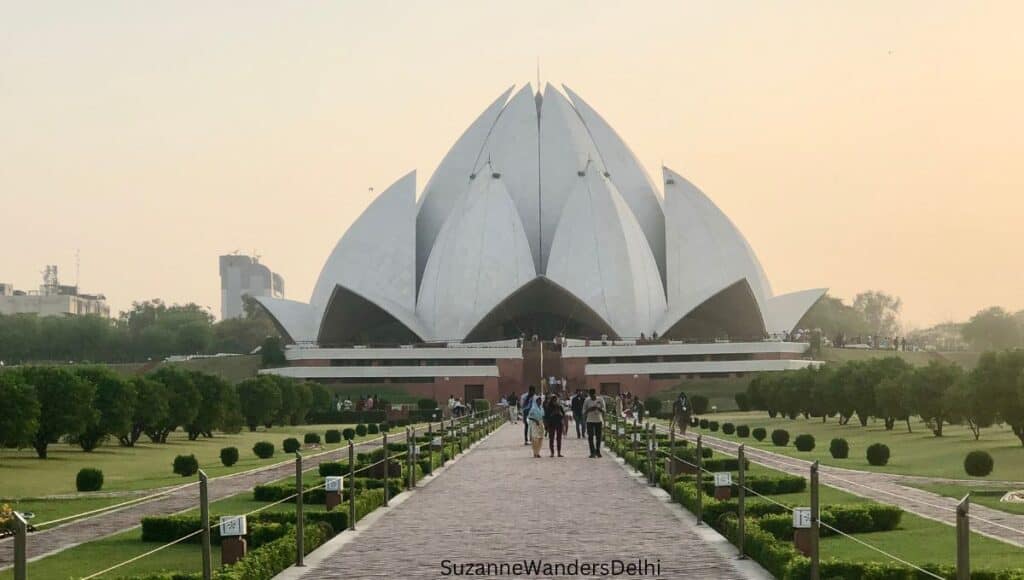
The temple is designed in the shape of a lotus flower, with 45 marble petals. Surrounding the temple are 9 pools which represent the floating leaves of a lotus. It was designed by Iranian architect Fariborz Sahba, and has won many awards for design and architecture.
The interior is very simple, but beautiful and filled with natural light. Everyone is welcome at the Lotus Temple. The Bahais believe in the oneness of humanity.
You’ll have to remove your shoes before entering the temple (shoe bags are available). Try to go as early as you can, there is usually a line up to get in.
- Hours: 8:30 am – 5:00 pm, daily (closed Monday)
- Cost: free
- Where to eat nearby: one of the restaurants at Epicuria Food Mall
How to Get Around Delhi
Delhi has good transportation options. The best way to get around Delhi, especially if you’re going more than a few kilometres, is by Delhi metro. The metro is easy to use, clean, efficient, safe and cheap. It’s an excellent system, one of the best in the world.
If you’re only going a few kilometers, the easiest thing is to grab an auto rickshaw. Autos (as they’re called in Delhi), are everywhere and not expensive. Plus it’s an iconic Delhi experience. I enjoy taking them around Delhi, except in the middle of summer when the heat is a bit much.
Uber and Ola (an Indian ride share program like Uber) are popular in Delhi and reliable. You’ll need data on your phone (you can pick up a SIM card at the airport on arrival – data is cheap in India), just be aware that most drivers speak very limited English.
Avoid the public buses. They can get very crowded, and have predominantly male passengers. I’ve actually never taken a city bus in Delhi. There’s really no need between the metro and auto rickshaws.
The Wrap-up on World Heritage Sites in Delhi: UNESCO Sites You Have to See
It’s always a good idea to see the UNESCO sites wherever you may be. These are usually the most special and culturally rich places. That is certainly the case in Delhi, and I’m sure you’ll be impressed by these amazing world heritage sites.
Looking for more? You might also like…
- Heritage Walk of Old Delhi: An Insider’s DIY Tour
- Riding the Metro: the Best Way to Get Around Delhi
- 12 BEST South Delhi Hotels: Hand-Picked by a Local 2024
Don’t forget travel insurance! It’s always a good idea to carry travel insurance just in case something goes wrong. I really like and use SafetyWing
